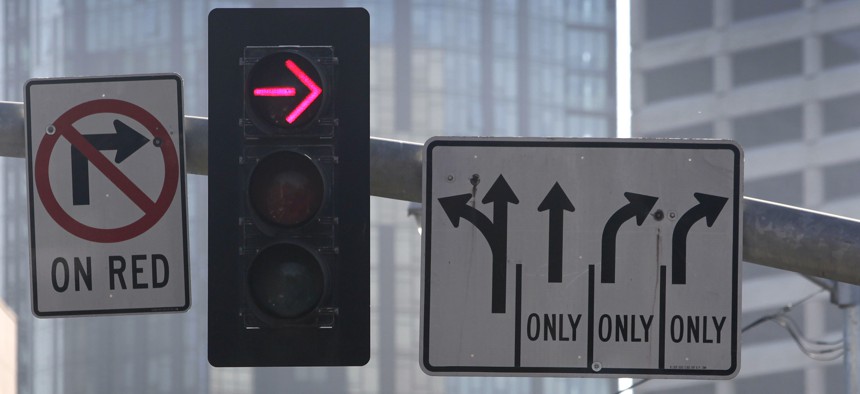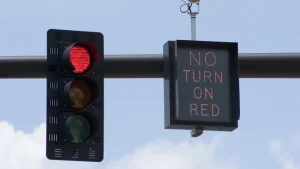Navigating intersections safely and efficiently is a crucial aspect of responsible driving. In Wisconsin, as in many other states, the right-turn-on-red maneuver allows drivers to make a right turn after coming to a complete stop at a red light, under specific circumstances. However, it’s essential to understand the rules and exceptions to avoid collisions and ensure everyone’s safety on the road. This blog post will provide a comprehensive overview of the right-turn-on-red rule in Wisconsin for 2024, including recent updates (if any), safe practices, and potential consequences for violations.
Importance of Understanding Right-on-Red Laws
Right-turn-on-red laws can significantly improve traffic flow, especially during periods with lower congestion. However, improper execution of this maneuver can lead to accidents involving oncoming traffic, pedestrians, or cyclists. By understanding the right-of-way rules and exercising caution, drivers can ensure a smooth and safe driving experience for themselves and others.
There haven’t been any major legal changes to Wisconsin’s right-turn-on-red law in recent years (as of April 2024). However, staying informed about potential updates or clarifications issued by the Wisconsin Department of Transportation (WisDOT) is always recommended. You can visit their website (https://wisconsindot.gov/pages/online-srvcs/online.aspx) for the latest traffic regulations.
Right-of-Way at Intersections with Red Lights in Wisconsin
Here’s a breakdown of the key requirements for making a legal right turn on red in Wisconsin:
- Complete Stop Before Entering Intersection: This is an absolute requirement. Drivers must come to a complete stop behind the designated stop line or before entering the crosswalk on the near side of the intersection. Rolling stops or stopping briefly and then creeping forward are not acceptable.
- Yielding to Oncoming Traffic and Pedestrians: Even after a complete stop, drivers must yield the right-of-way to all oncoming vehicles with a green light or those already lawfully within the intersection. Additionally, they must yield to pedestrians who are crossing the street in the direction the driver intends to turn. This includes ensuring pedestrians have enough time to safely cross the entire intersection, not just the lane the driver is turning into.
- Turning into the Nearest Lane of Traffic: When making a right turn on red, drivers must enter the nearest lane of traffic available in the direction they’re turning. They should avoid swerving into other lanes of traffic to avoid oncoming vehicles or pedestrians, as this can cause confusion and increase the risk of accidents.
Exceptions to Right-on-Red in Wisconsin
There are situations where making a right turn on red is prohibited in Wisconsin. Here are some key exceptions to be aware of:
- Posted Signs Prohibiting Right Turns on Red: Specific intersections might have signs explicitly prohibiting right turns on red. These signs typically display a red circle with a white arrow pointing right and a red bar across it. Drivers must obey these signs and come to a complete stop until the light turns green.
- Multi-Lane Right Turns and Unsafe Conditions: If the intersection has multiple lanes for right turns, a right turn on red might not be permitted. Additionally, if the driver needs to cross multiple lanes of moving traffic to make the turn, it’s generally considered unsafe and illegal. In situations with limited visibility due to fog, rain, or darkness, right turns on red are also discouraged.
- School Zones and Crosswalks with Special Signals: Right turns on red are typically prohibited within school zones during designated school hours. Additionally, intersections with special pedestrian crossing signals, such as flashing yellow lights, might not allow right turns on red.
Safe Practices When Turning Right on Red in Wisconsin
Understanding the legal requirements is just one aspect of safe right turns on red. Here are some additional practices to consider:
- Double Checking for Oncoming Traffic and Pedestrians: Don’t rely solely on a quick glance before proceeding. Take a moment to ensure there are no oncoming vehicles, especially motorcycles or bicycles that might be harder to spot initially. Look out for pedestrians crossing not only in the designated crosswalk but also those entering the intersection from medians or sidewalks.
- Avoiding Stale Green Traps: Sometimes, a green light might appear to be taking an unusually long time to change. This could be due to a malfunctioning sensor not detecting stopped vehicles on the cross street. Be patient and avoid the temptation to proceed on red just because the green light seems stuck.
- Right Turn on Red During Heavy Traffic: During peak traffic hours, right turns on red might not be practical or safe. Consider the potential for long wait times and the increased risk of accidents due to congested intersections. In such situations, it might be better to wait for a green light to ensure a smoother and safer maneuver.
Penalties for Violating Right-on-Red Laws in Wisconsin
Failing to follow the right-turn-on-red rules in Wisconsin can result in penalties. Here’s what you might face:
- Fines and Potential Demerit Points: A violation of the right-turn-on-red law can lead to fines ranging from $100 to $300, depending on the severity of the offense and the driver’s record. Additionally, the violation might result in demerit points being added to the driver’s license. Accumulating a certain number of points within a specific period can lead to license suspension.
- Insurance Rate Increases: Traffic violations, including right-turn-on-red infractions, can be reported to your insurance company. This could lead to increased insurance premiums, making your car insurance more expensive.
Conclusion
The right-turn-on-red maneuver can be a helpful tool for improving traffic flow in Wisconsin. However, it’s crucial to prioritize safety by understanding the rules, exceptions, and safe practices. By coming to a complete stop, yielding the right-of-way, and exercising caution, drivers can ensure a smooth and safe driving experience for themselves and everyone on the road. Remember, a few extra seconds of waiting at a red light are much better than risking an accident and its potential consequences.
Additional Tips:
- Familiarize yourself with specific traffic regulations in the city or area you’re driving in. While the general right-turn-on-red rules apply statewide, there might be local variations or specific intersections with unique signage.
- Consider defensive driving courses to enhance your awareness of potential hazards and hone your safe driving skills.
- Always prioritize the safety of pedestrians and cyclists. They are the most vulnerable participants on the road, and their safety should be your top concern.
By following these guidelines and exercising caution, you can contribute to a safer and more efficient driving environment in Wisconsin.



